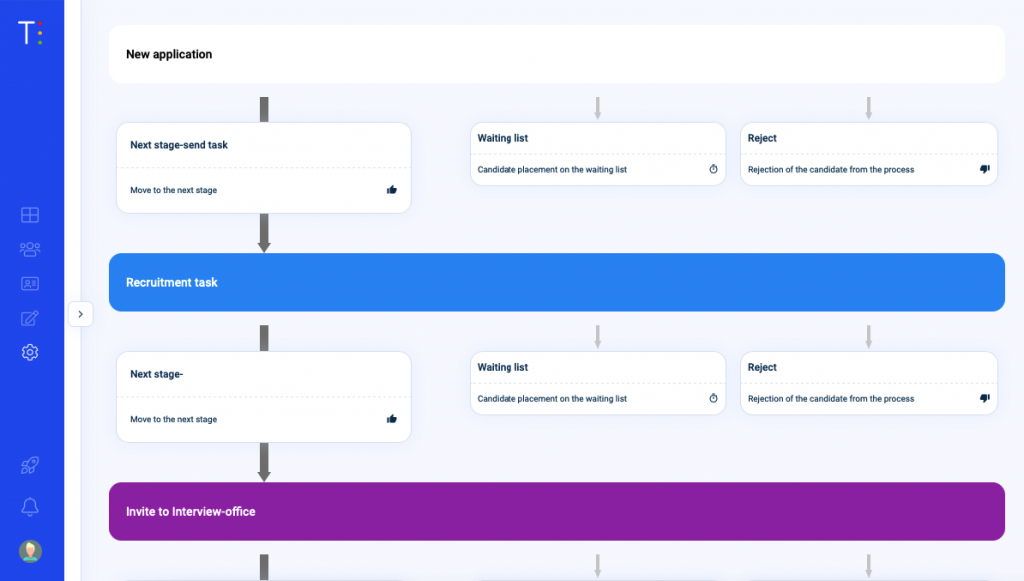
The article is prepared by Nina Kozłowska from Traffit. Thank you for sharing your knowledge with us!
Enhancing employee experience is crucial for increasing satisfaction in your team and improving employee retention. As a starting point of an employee journey, we can indicate an onboarding process, but we can’t overlook the organization’s impression before hiring. A candidate becomes an employee if recruitment is successful, so you need to deliver a coherent experience across all touchpoints with a brand. Read on to find out more.
What is candidate experience, and why it’s essential for employee experience?
Candidate experience describes aggregated impressions that a brand delivers during a recruitment process. Every job advertisement, a career page, every email, a job interview, and even the lack of response or poor feedback influences the candidate experience.
Why is it significant for employee experience?
- Expectations vs. reality – during the hiring process, a recruiter describes a position and a workplace. Sometimes the description and reality don’t match, and such a situation dramatically spoils the initial excitement.
- Crucial first 90 days – 1 in 4 employees quit the job within the early 90 days. These three months enable workers to see if the position and a company is right for them. Make sure you’re delivering all of the things and benefits you’ve committed during the recruitment. Start from day one to improve employee experience immediately.
- Avoiding confusion – first weeks in the new position can be challenging. Provide seamless employee onboarding and make sure your new hires are particular about their responsibilities and expectations. Moreover, introduce your team and show new employees around your office to make them feel comfortable in the workplace. Start your onboarding even before the actual first day of work. You can send some information regarding a dress code as well as a schedule for the first day. That way, a new hire can be more relaxed knowing what’s on the agenda.
Candidate experience and employee experience are sometimes entirely different, simply because the recruitment process and what happens after hiring are usually designed and delivered by other people or even run by separate departments. Nevertheless, all of the experience should be coherent to avoid confusion and employee frustration. Once a candidate becomes an employee, you can continue improving their experiences and increase satisfaction among your team.
How to improve candidate experience and attract the best talents?
While enlarging your team, you should focus on finding professionals with the right skills and vibe that’ll match your organization. The best talents are there somewhere – you just need to reach them and attract them to apply. Below you can find a few actionable tips.
Create an effective recruitment process
A short and concrete hiring workflow is a must-have. The best talents won’t wait for your response for months and won’t enjoy dozens of recruitment stages. A few well-thought steps will shorten the time to hire and benefit everyone involved. Moreover, be transparent about your process in the advert – publish a timeline and briefly explain every stage.

Craft a clear job description and application form
Establish specific responsibilities and requirements for the applicants and use plain language to describe them. Don’t confuse readers with too complicated terms and long sentences. Get straight to the point. Use an application form to get essential information and required documents faster than via email.
Be transparent about your company
As mentioned above, messing with expectations and reality can negatively affect employee experience. Share accurate insights on your work culture and get applications that correspond to it. Update your career page to present updated information about the team, office space, learning and development plan, etc.
Notify candidates on the transitions to the next stage of a hiring process
It’s a great practice to notify applicants whenever you move them to the next stage, review their tasks, etc. That way, a candidate knows all of the recruitment process updates and can be more engaged. An applicant tracking system enables users to send such emails automatically so that you can focus on other tasks.
Rock the job interview
Use the face-to-face meeting to get more information about the candidate, describe the role better, and talk about your organization’s goal and mission. That way, you can assure an applicant that it’s a great place to work. You can also show the potential employees the workspace so that there will be no surprises.
Don’t ghost candidates
Remember, it’s vital to care about every job seeker, not only those who actually get the job. Rejected candidates might consider applying for other positions in your company in the future recruitment processes or recommend you to their friends. Always deliver insightful feedback and rejection reasons to show that you care. Ghosting in recruitment is definitely a no-go in 2021.
Key takeaways on connecting candidate experience and employee experience
Perceive these two elements as one journey and create a consistent strategy. Your job advert, career page, and job interview should carry the same message and correspond with reality. Flawless candidate experience lets you attract and engage the best professionals and start cooperating on the right track.
Additionally, while preparing for the recruitment, you might discover that other companies offer different benefits or a better learning and development program. It’s a great time to suggest more actions in your organization to prepare a competitive offer for the market’s top talents.


